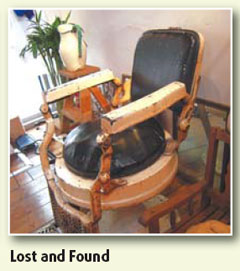Beijing:Walk the sites less traveled


For those of you who feel the Yonghegong Lama Temple is a little too crowded (what with giant incense-stick-clutching devotees queuing up from 6 am in the morning when the temple gates open only after 8:30 am), hopping across Yonghegong Dajie to Guozijian Street might be more relaxing.
Stashed between the intense line-up of shops selling religious paraphernalia stands an arch, at the entrance to Guozijian Street. Intricate patterns in gold are inscribed on flaming orange, turquoise and aquamarine, on its frame and elaborate eaves. One of the oldest surviving arches in Beijing, the structure, like the Confucius Temple and Imperial College on this road, was built during the Yuan Dynasty (1271-1368).
Though more than 700 years old, Guozijian Street is an engaging potpourri of the old and the new. A few paces toward the west is the peaceful Songtangzhai Museum. Hospice administrator Li Songtang put together from heritage articles that Beijing had dismantled and left by the wayside in its drive to modernize.
At the center of the courtyard, under an arch, stands a beatific sculpture of the Buddha, surrounded by urns, sculptures and incense stick holders. A mini statue of Confucius is visible in the background. Inside the rooms, more statuettes of the Buddha are kept in a glass case, on which framed pictures of Mary with the infant Jesus, cherubs on a swing and what looks like a Hindu God with a halo behind his head, are displayed. On your way out do not forget to check out a quaint contraption on your right - a bell and an urn. Believers should make a wish and throw a coin to hit the bell, so that it may come true.
 0 Comments
0 Comments







Comments